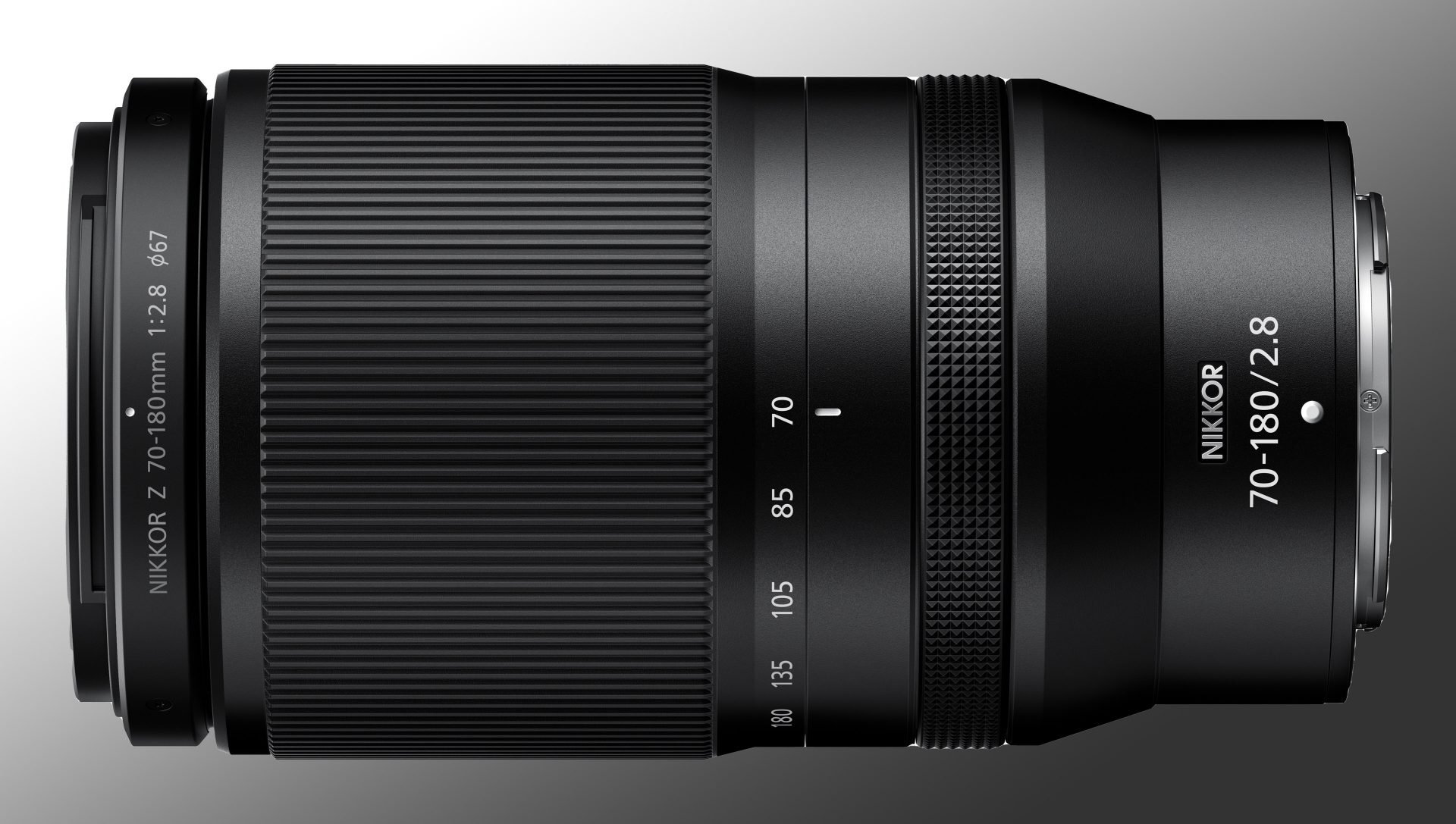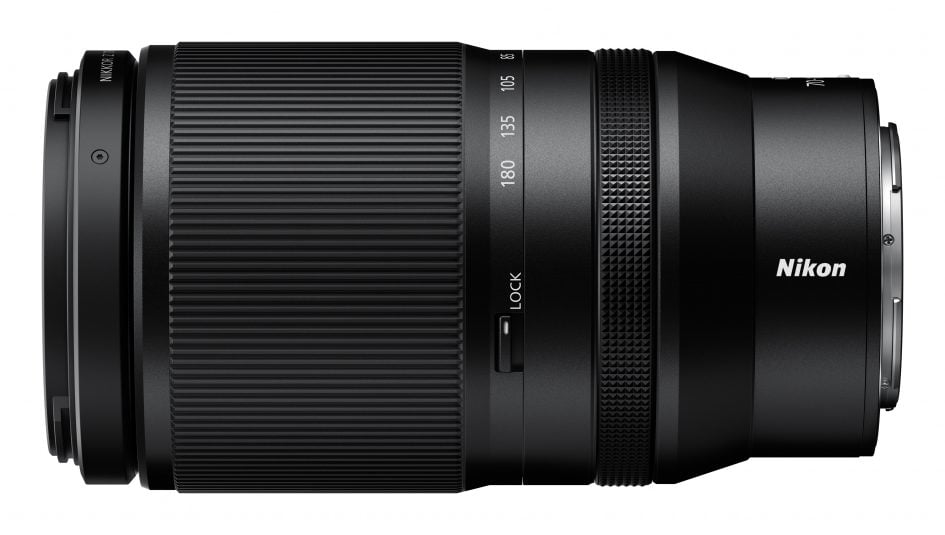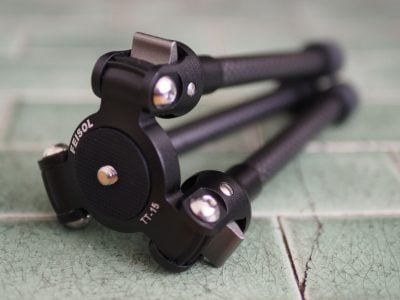Nikon Z 70-180mm f2.8 review so far
-
-
Written by Thomas
The Nikon Z 70-180mm f2.8 is a compact and lightweight telephoto zoom designed for Nikon Z-series mirrorless cameras and corrected for full-frame sensors. Announced in June 2023, it completes another “trinity” of zoom lenses for Z-mount with a fast f2.8 focal ratio: the Z 17-28mm f2.8 and the Z 28-75mm f2.8. All three lenses are smaller, lighter and less expensive than Nikon’s S-line professional zoom lenses but they cover a slightly smaller range of 17-180mm versus 14-200mm.
Physically, the Z 70-180mm f2.8 shares the same small 67mm filter thread with the shorter zooms and it is only 151mm long – but extends when zoomed in to 180mm focal length. At 795g it is pretty lightweight and can go down to a maximum magnification of 1:2.1 at 70mm focal length. Sadly it lacks optical image stabilization and relies solely on the sensor based stabilization of Nikon’s full-frame Z-mount bodies. Which is a pity if you want to use the lens on one of Nikon’s cropped sensor cameras. From the optical design and MTF-charts it is clear that the optics should be (near) identical to the Tamron 70-180mm f2.8 Di III VXD for Sony E-mount. But unlike the Tamron on a Sony Alpha mirrorless body the Nikon Z 70-180mm f2.8 can be used with Nikon’s Z TC 1.4x and Z TC 2.0x. This converts the lens into a 98-252mm f4 or 140-360mm f5.6 zoom respectively. And maximum magnification increases to 1:1.5 or 1:1.
The Nikon Z 70-180mm f2.8 is listed at 1449 EUR / 1247 USD / 1299 GBP and should become available mid of July.
Facts and features
Let’s compare the Nikon Z 70-180mm f2.8 to the Nikon Z 70-200mm f2.8 VR S. As usual I’ve rated the features with a [+] (or [++]), when it’s better than average or even state of the art, a [0] if it’s standard or just average, and [-] if there’s a disadvantage.
Size (diameter x length): 84 x 151mm (3.3 x 6.0in.) plus an estimated 50mm for the lens hood. The new Nikon Z 70-180mm f2.8 is much smaller than the Z 70-200mm f2.8 VR S at 89 x 220mm + 56mm lens hood. Zooming the Z 70-180mm f2.8 to 180mm focal length extends the lens by 29mm. This makes it still substantially shorter than the Z 70-200mm f2.8 VR S which does not change its length during zooming. [+]
Weight: 795g (28 oz.) plus an estimated 50g for the lens hood. That’s only 60% of the Z 70-200mm f2.8 VR S’s 1359g + 82g tripod foot + 63g lens hood. The Z 70-180mm f2.8 has no detachable tripod collar. [+]
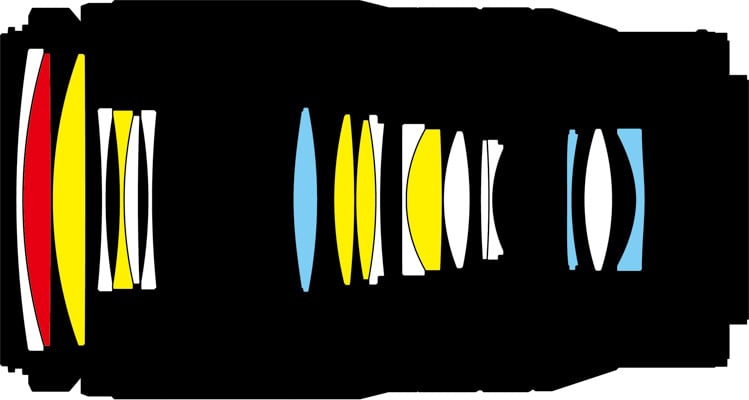
Lens construction of Nikon Z 70-180mm f2.8 (above), Tamron 70-180mm f2.8 Di III (below)

Optics: The Z 70-180mm f2.8 has the same optical formula as the Tamron 70-180mm f2.8 Di III with 19 elements in 14 groups including 6 special dispersion elements and 3 aspherical elements. This is a slightly simpler design than the Z 70-200mm f2.8 VR S with 21 elements in 18 groups. Both Nikon lenses have anti-fouling coating on the front element to repel water, dust, and dirt and make cleaning easier. [+]
Minimum object distance is 0.27m (0.9ft.) at 70mm focal length and 0.85m (2.8ft.) at 180mm focal length. A very good maximum magnification of 1:2.1 is achieved at 70mm focal length albeit with a very short working distance of around 10cm (lens hood detached). At 180mm focal length maximum magnification is probably around 1:4.1 with a working distance of 0.61m. The Z 70-200mm f2.8 VR S achieves a minimum object distance is 0.48m at 70mm focal length and 0.96m at 200mm focal length. Maximum magnification is 1:4.6 at 200mm (resp. 1:4.7 at 70mm) This results in a working distance of 0.72m at 200mm focal length when the lens hood is removed. [+]
Both lenses can use Nikon’s teleconverters for Z-mount: The Z TC-1.4x for 565 EUR (incl. 19% VAT) / 547 USD / 579 GBP and Z TC-2.0x for 640 EUR / 597 USD / 629 GBP. [+]
Filter-thread: The Nikon Z 70-180mm f2.8 shares the same 67mm filter-thread with its shorter siblings the Z 17-28mm f2.8 and Z 28-75mm f2.8 which is very convenient – and saves costs. The Z 70-200mm f2.8 VR S takes 77mm filters. [+]
Image stabilization: The Z 70-180mm f2.8 does not offer optical stabilization. The lens solely relies on the sensor-based image stabilization of Nikon’s full-frame mirrorless cameras. The Z 70-200mm f2.8 VR S zoom lens has optical image stabilization built in which works together with the sensor-based image stabilization of a Nikon Z body. [0]
Aperture ring and other control elements: The Z 70-180mm f2.8 has no aperture ring nor the usual AF/MF switch but offers a zoom-lock to prevent the zoom from extending when in the 70mm position. There’s also the usual multi-function control ring of Z-Nikkors which can be assigned to operate the aperture, exposure compensation, ISO or focus. The Z 70-200mm f2.8 VR S offers more controls with 4 function buttons L-Fn2 plus an additional L-Fn button which can be assigned different functions like AE/AF lock. It also sports a focus-limiter and an OLED display indicating focal length, aperture, or focusing distance and depth-of-field. [0]
Auto focus: Yes with built-in AF drive. Manual-focus override is by simply turning the control ring – if MF is assigned to it. The focus ring has the usual variable gearing which allows for very precise manual focus when turned slowly. You can probably reverse the focus ring direction but I doubt the Z 70-180 f2.8 allows switching to linear response with different settings for focus throw which the Z 70-200mm f2.8 VR S offers. The latter also has the benefit of a dedicated focus ring. [0]
Lens profile: As usual Z-Nikkors come with a lens profile which can be controlled from the camera. Vignette control offers the usual options of High, Normal, Low and Off. Diffraction compensation and Auto distortion control can be activated or deactivated. [+]
Both lenses cover full frame/FX or smaller. [+]
Price: The Z 170-180mm f2.8 is listed at 1449 EUR (incl. 19% VAT) / 1247 USD / 1299 GBP. This looks like a pretty high price for a lens without optical stabilization and only 180mm maximum focal length. But the Z 70-200mm f2.8 VR S goes for 2330 EUR (after heavy rebates) / 2397 USD / 2420 GBP. [+]
The Nikon Z 70-180mm f2.8 comes with the usual flimsy lens pouch which has no strings to pull it close. So if you put the lens in your bag it might easily slip out of its pouch and bang around unprotected. Same for the Z 70-200mm f2.8 VR S. [0]
Sealing: yes, a rubber grommet at the lens-mount plus further special weather-sealing throughout the construction, just like the Z 70-200mm f2.8 VR S. [+]
The score of 0[-]/4[0]/10[+] makes the Nikon Z 70-180mm f2.8 look like a well featured design: Most prominent are its small size and weight, the maximum magnification of 1:2.1, and the possibility to use teleconverters. It’s biggest disadvantage probably is the missing image stabilization which limits its use on Nikon’s DX camera bodies. But if image quality is comparable to what Tamron’s 70-180mm f2.8 Di III VXD already demonstrated (on a 42MP Sony A7R II) the new lens should be a fine member of Nikon’s non-S-line trinity of small, light and affordable f2.8 zoom lenses.
Three Nikon f2.8 zoom lenses for Z-mount
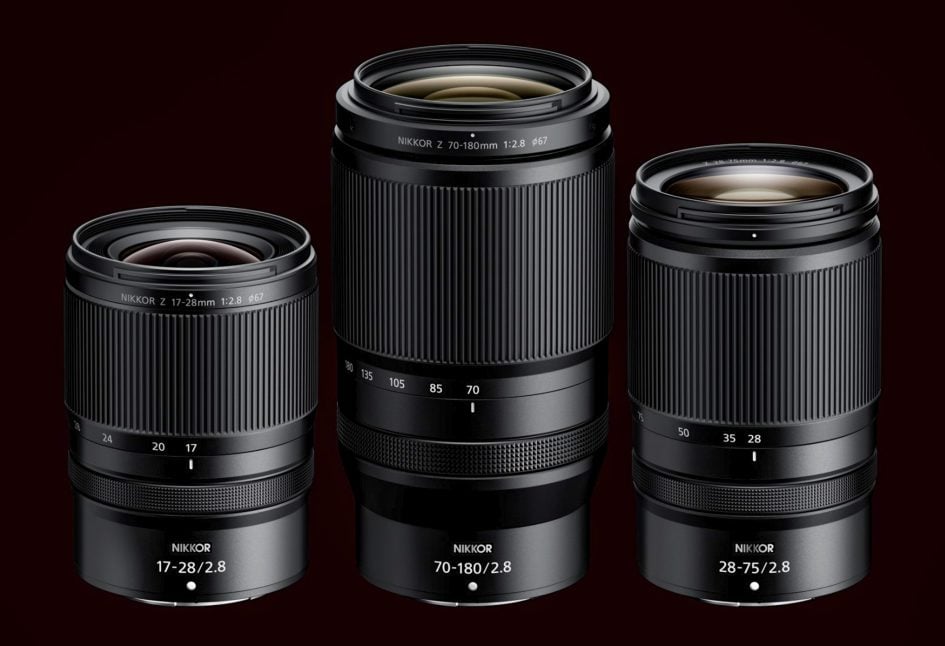
Above from left to right: Nikon Z 17-28mm f2.8, Z 70-180mm f2.8, Z 28-75mm f2.8
Sharpness and contrast
Let’s have a look at the theoretical performance of the Nikon Z 70-180mm f2.8 (and Tamron 70-180mm f2.8 Di III) first and compare it to the performance of the Nikon Z 70-200mm f2.8 VR S:
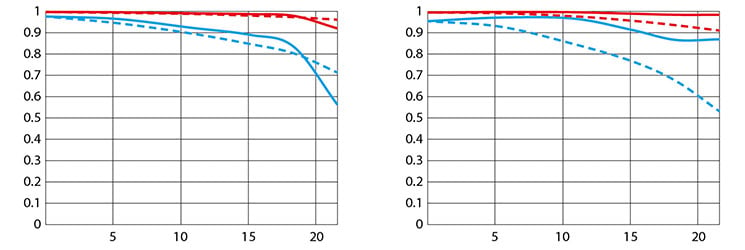
Above: MTF Nikon Z 70-180mm f2.8 at 70mm f2.8 (left), 180mm f2.8 (right)
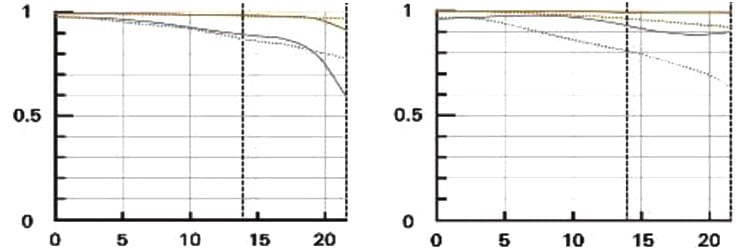
Above: MTF Tamron 70-180mm f2.8 Di III at 70mm f2.8 (left), 180mm f2.8 (right)

Above: MTF Nikon Z 70-200mm f2.8 VR S at 70mm f2.8 (left), 200mm f2.8 (right)
These MTF charts show the computed lens-performance of lenses wide open without influence of diffraction. Higher values are better (more contrast) and the closer the line-pairs are together the less astigmatism (= resolution depends on the orientation of the test-pattern) the lens has. The x-axis displays the distance from the optical axis (=center of the sensor) in mm. I’ll show you the real-life performance at 4 mm (center), 13 mm (DX-C-corner), and 20 mm (FX-corner) on a 45MP Nikon Z8 camera in my full review.
From the charts the Nikon Z 70-180mm f2.8 should show comparable performance to the Z 70-200mm f2.8 VR S with lower astigmatism at 70mm and a bit higher astigmatism at the long end. All-in-all this looks very promising for Nikon’s Z 70-180mm f2.8.
Check back for my full review with all the real life results and comparisons as soon as the lens becomes available. And if you can’t wait have a look at my Tamron 70-180mm f2.8 Di III VXD review to get an impression on how these optics perform on a 42MP Sony A7R II.
Check prices at Amazon, B&H, Adorama, eBay or Wex. Alternatively get yourself a copy of my In Camera book, an official Cameralabs T-shirt or mug, or treat me to a coffee! Thanks!